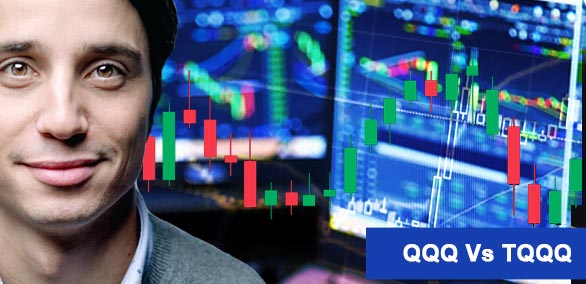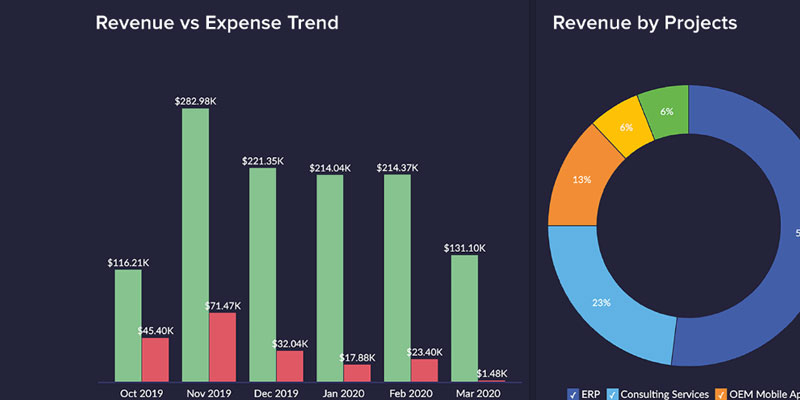TQQQ vs. QQQ
Jan 22, 2024 By Triston Martin
The Invesco QQQ is an ETF that mirrors the performance of the Nasdaq-100 Index and is owned by many investors. Its primary emphasis is on big corporations based in the United States and other countries, particularly those operating in the technology, health care, manufacturing, consumer discretionary goods, consumer staples, utilities, and telecommunications. In the past, the triple-Q was referred to as the QQQQ.
ETFs are also known as ProShares TQQQ. Nevertheless, it is a leveraged product, which means it increases returns to investors by using derivatives and loans. Specifically, the TQQQ aims for returns three times higher than the QQQ.
What Is QQQ?
An exchange-traded fund (ETF) that follows the Nasdaq 100 Index without making any active changes is called Invesco QQQ Trust, and its ticker symbol is QQQ. This index tracks the market capitalization of the top 100 companies in the Nasdaq Composite Index. The firms are ordered from highest to lowest. Technology accounts for 50.97% of the total weighting in QQQ, followed by communications (18.38%) and consumer discretionary (16.13%)
QQQ is regarded as an aggressive-growth stock fund because it has significant exposure to technology firms. Compared to a more comprehensive stock index, such as the S&P 500, investors should prepare themselves for more short-term volatility. In light of its track record, if you decide to invest, you could be compensated with returns much higher than the norm in exchange for accepting a higher level of risk.
Pros
Diversification
This exchange-traded fund invests in 100 firms across six different industries, even though the QQQ portfolio significantly weighs toward technology equities.
Cost-effective
QQQ follows the trend of other exchange-traded funds (ETFs), which have low-cost ratios. The fund has very low expenses, coming in at only 0.20%, or $20 for every $10,000 invested.
The possibility of significant profits
Even though there is no way to know how the future will turn out, QQQ has consistently beaten the S&P 500 index, particularly in its long-term returns. The return on investment for QQQ over 10 years is 22.9%, and over 15 years, it is 16.9%. The returns on the S&P 500 are 16.5% and 10.6%, respectively, whereas these returns are much larger than any of those.
Cons
Diversification
However, even though this is one of the benefits of QQQ, it is also one of the drawbacks. This fund has a greater level of diversification than a fund that only invests in the technology sector, but its level of diversification is lower than that of the S&P 500 index.
Market risk
The price of QQQ will be more volatile than the price of a more broadly based stock index, such as the S&P 500, because of the fund's heavy concentration on the technology, communications, and consumer discretionary sectors.

What Is TQQQ?
A leveraged exchange-traded fund known as ProShares UltaPro QQQ (TQQQ) aims to achieve daily returns, before fees and costs, that are three times higher than those of the Nasdaq 100 Index (or the QQQ ETF, which tracks the same index). If the price of the QQQ goes up by one percent in one day, for example, the price of the TQQQ will probably go up by three percent.
If you decide to invest, you should remember that the same threefold performance applies to both the upside and the downside. The price of TQQQ may decrease by 3% if the price of QQQ falls by 1%. That being the case, putting money into TQQQ represents a significant wager on the increase of the Nasdaq 100 (also known as QQQ). TQQQ is primarily used as a speculative instrument by investors for a holding duration of less than one year.
Pros
Exceptional performance
As a result of the fact that TQQQ is a threefold leveraged exchange-traded fund that tracks the Nasdaq 100 Index, investors have the opportunity to obtain returns that are three times as high as those of the index, less any fees.
Limit orders
Leveraged funds have the potential to generate significant short-term profits, but they also carry the risk of producing significant short-term losses. The fact that exchange-traded funds (ETFs) may be exchanged throughout the day, like stocks, means that investors can put limited orders to sell at a defined price, limiting severe losses.

Cons
Market risk
Because leverage funds such as TQQQ are prone to experiencing severe price movements, this exchange-traded fund (ETF) is unsuitable for investors with a low tolerance for volatility.
Expenses
TQQQ has fees of 0.95%, which works out to $95 for every $10,000 invested, much more than the expense ratios of most ETFs, which are at 0.20%. Compared with similar funds with lower expenditures, those with higher expenses result in a poorer overall return for the investor.

The Sharing Economy

Everything you Need to Know About Indirect Loans

Ways To Build A Bond Ladder To Boost Returns

TimeTrex 2024 Review: Is It the Right Workforce Management Tool?

2024's Essential Guide to the 7 Best Invoicing Software for Small Businesses

A Guide about Alliant Credit Union Personal Loans

How Construction Loans Can Finance the Home of Your Dreams

How Long Should You Live in a House Before Selling

Investing in The 10-Year U.S. Treasury Notes: Its Benefits and Phases

Which Mortgage Type Should I Choose?

How exactly does Eventbrite make money?
